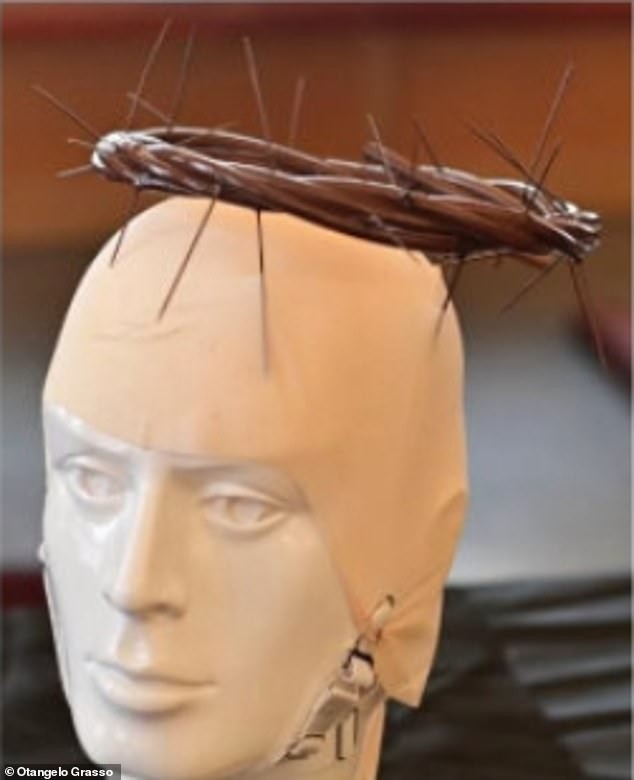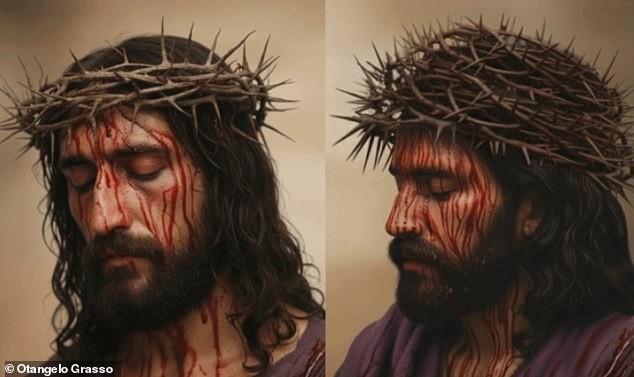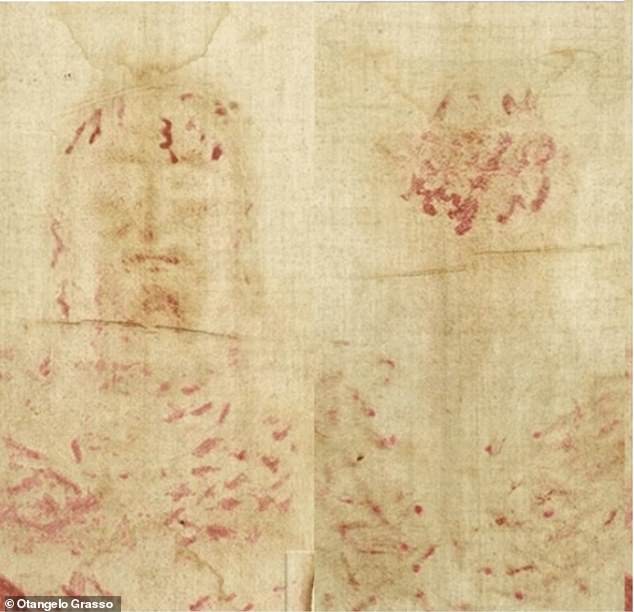The Crown Reimagined: Forensic Science Finds Jesus Wore a Ring-Like Crown, Not a Helmet
A new forensic study uses advanced analysis to recreate the true appearance of Jesus' Crown of Thorns based on blood patterns on the Shroud of Turin, the cloth believed to have wrapped his body after the crucifixion. For centuries, scholars have debated the crown's shape; some saw a simple circlet of thorny branches, while others argued for a full cap or helmet that covered the entire scalp. Biological systems analyst Otangelo Grasso argues the crown was a ring-like wreath, concentrating wounds at the hairline, temples and back of the head. He examined the distribution of bloodstains on the Shroud, the cloth's geometric gaps, and the engineering complexity of each crown option. A key clue: the Shroud shows blood concentrated at the brow/temples and nape, with no blood at the very top of the head, which argues against a helmet-style crown.

In This Article:
Two Ancient Theories, One Century-Long Debate
The crown's shape has been debated since medieval times, appearing in art and religious thought. Some scholars favored a simple circlet, while others argued for a helmet-like cap with dozens of puncture wounds across the scalp. The question has persisted as researchers attempt to reconcile biblical descriptions with physical evidence found on relics such as the Shroud and related artefacts.

Circlet Hypothesis Gains Ground: Blood Patterns and Geometry Favor a Ring
Grasso notes that scalp blood could be reactivated after death through hair wicking and handling, allowing it to transfer across the head during burial. In experimental reconstructions, a circlet with inward-pointing thorns produced rich perimeter staining, tangential entrance-exit-re-entry puncture triads from single thorns, and limited supra-band punctures above the hoop plane from broken thorn fragments during forced seating. By contrast, the helmet model would require a complex lattice with multiple layers and interwoven branches; documented cap builds reportedly take hours and intricate interlacing.

Ancient Texts and Relics Support a Wreath, Not a Cap
Early Christian sources use Greek words stephanos (crown) and pleko (to braid), which denote a braided wreath rather than a cap, suggesting a parody of royal crowns rather than a helmet of suffering. The Sudarium of Oviedo, a separate cloth believed to have covered Jesus' face, measures 33 inches by 20 inches and bears bloodstains consistent with the head of a crucified man. Blood patterns on both relics correspond to a narrow band of wounds, consistent with a ring-style crown rather than a dome-like structure; geometric analysis demonstrates circlet compatibility.

A Cautious Conclusion with Wider Implications
This forensic approach offers a scientific framework to understand crucifixion artifacts and their depiction in religious art; modern tools—from geometric modeling to material testing—illuminate details from the ancient past. The study is not yet peer-reviewed; a cap-like construction remains possible but only under highly specific conditions, such as selective early vertex clotting or blood entirely contained by hair. Taken together, the evidence moderately to strongly supports a circlet; a helmet remains possible but requires extra assumptions. The crown was likely a thorn-studded wreath encircling Jesus' head. In reconstructions, the circlet produced a dramatic 'halo suspension' effect as inward-pointing thorns hovered above the scalp before being pressed down, echoing descriptions of Roman soldiers forcing the crown onto Jesus' head.

